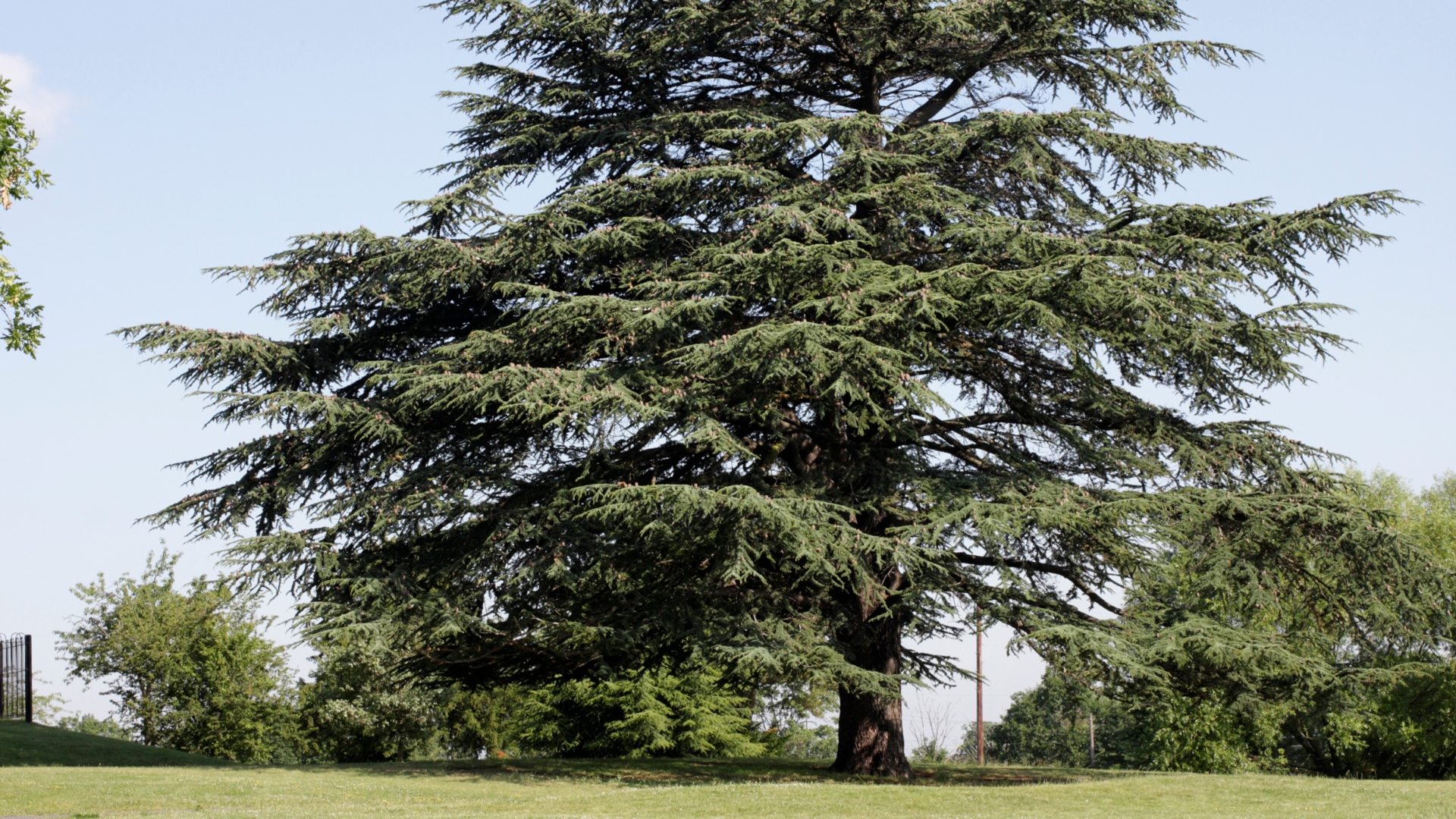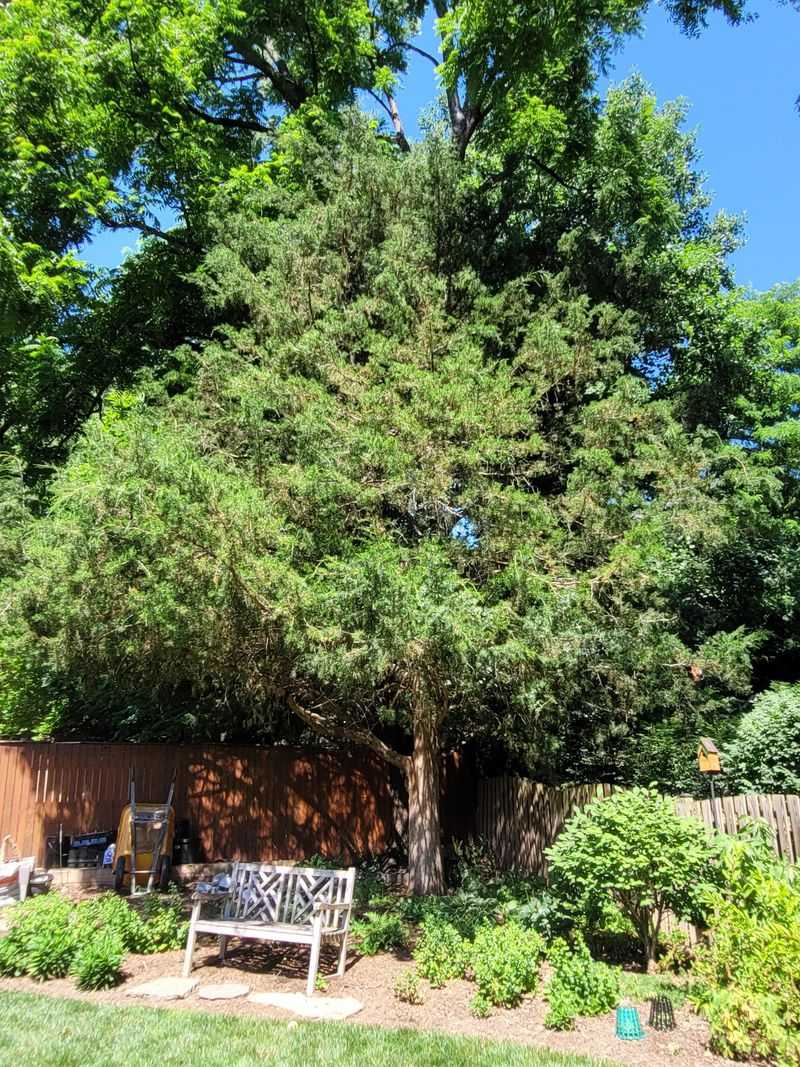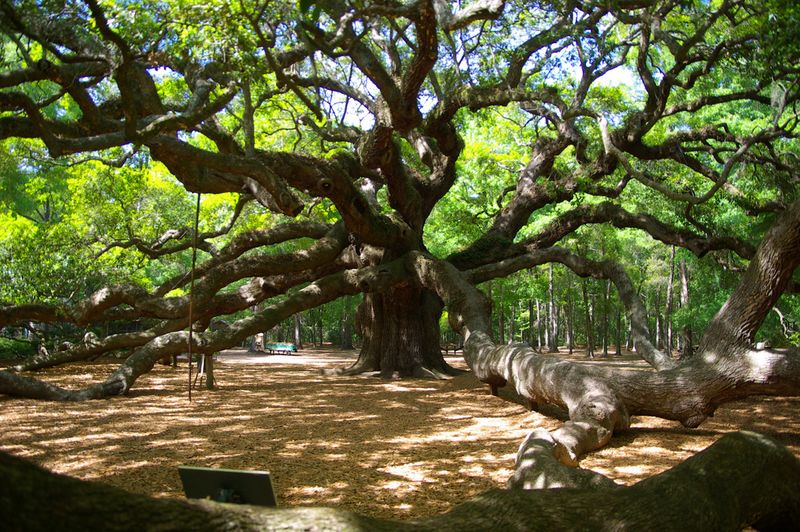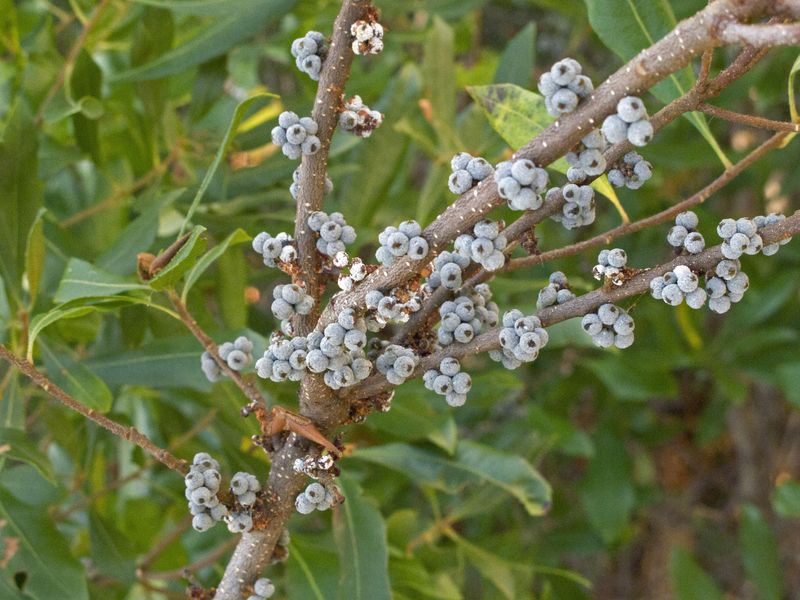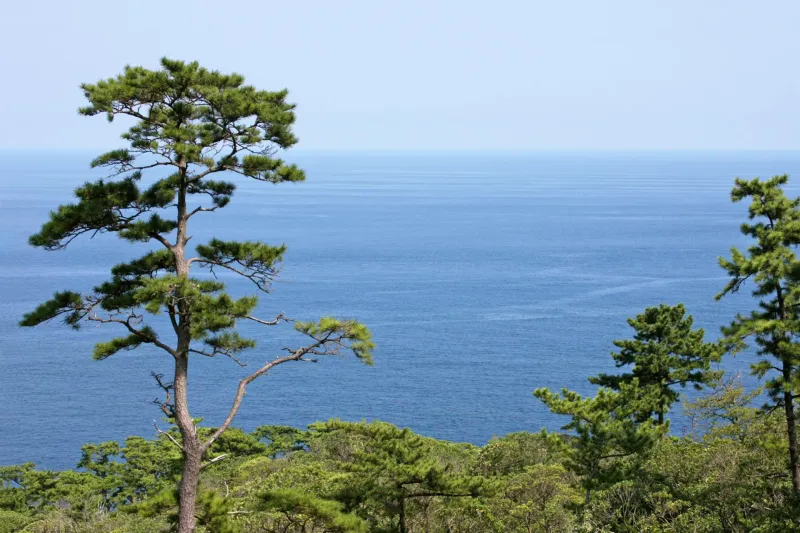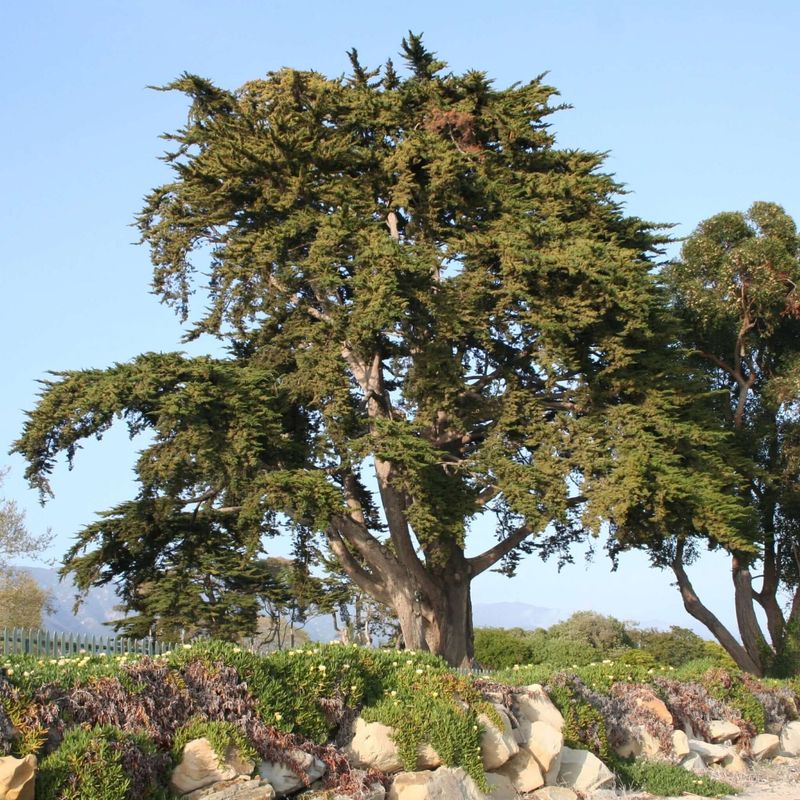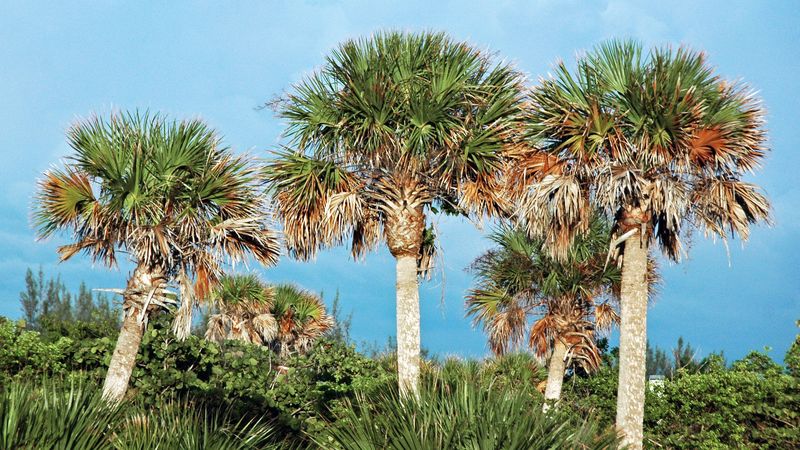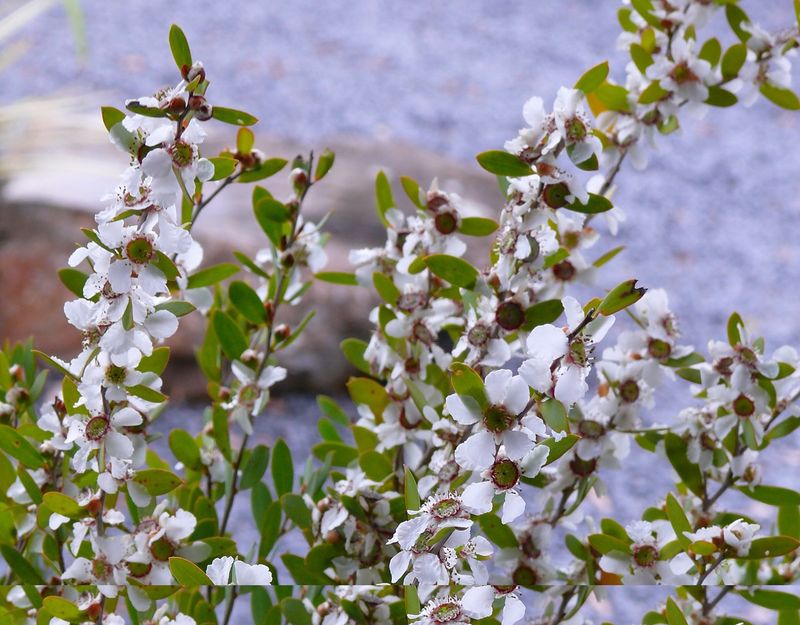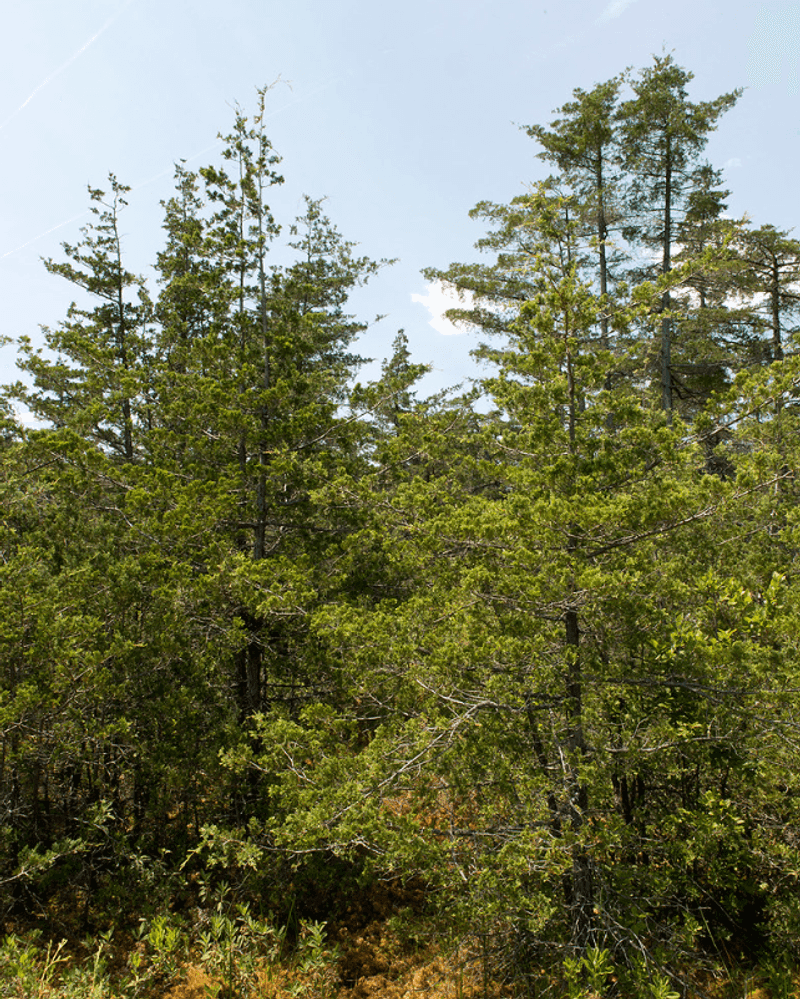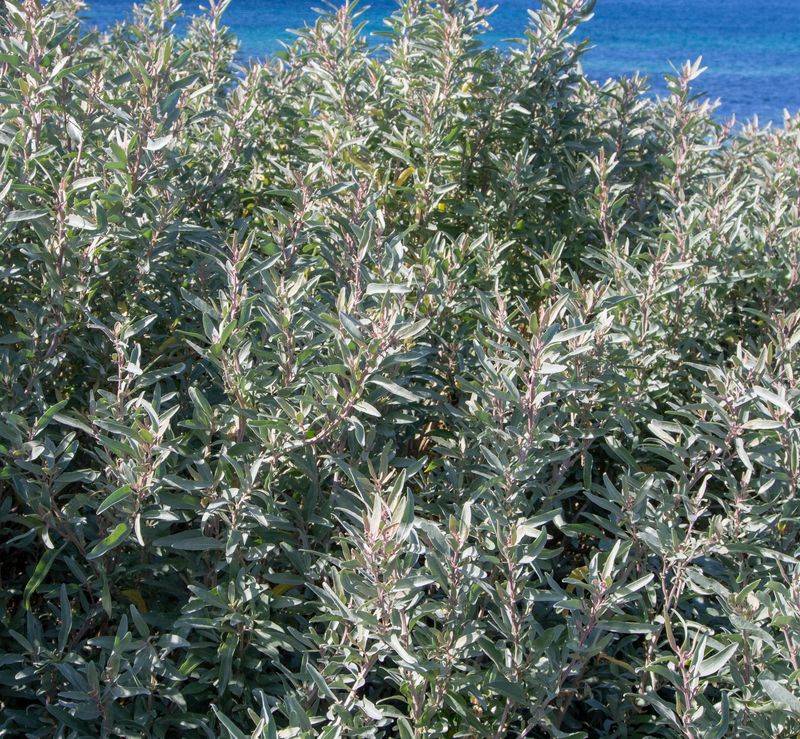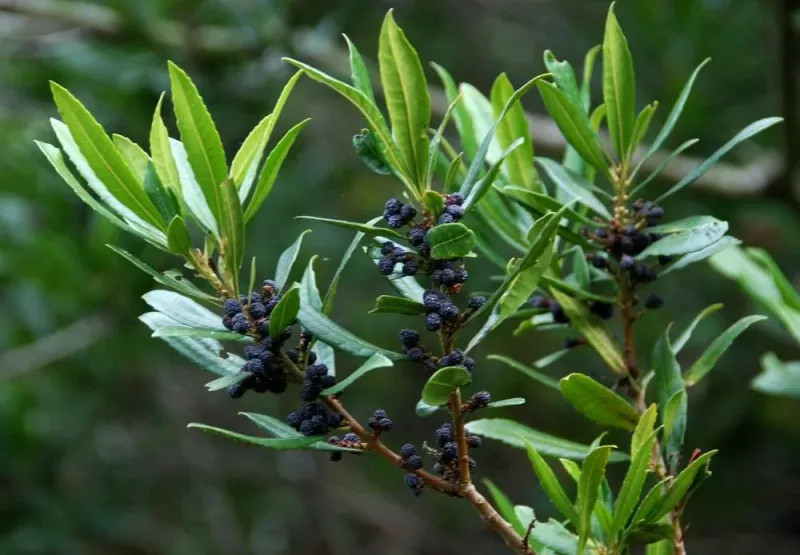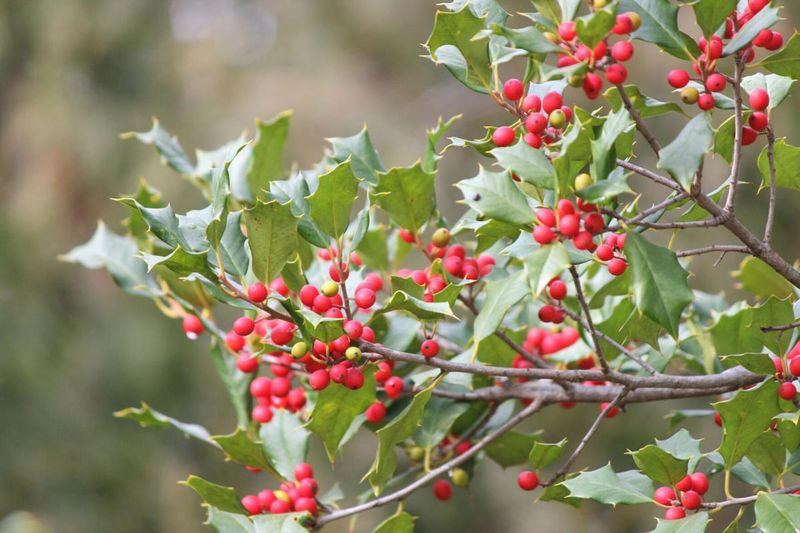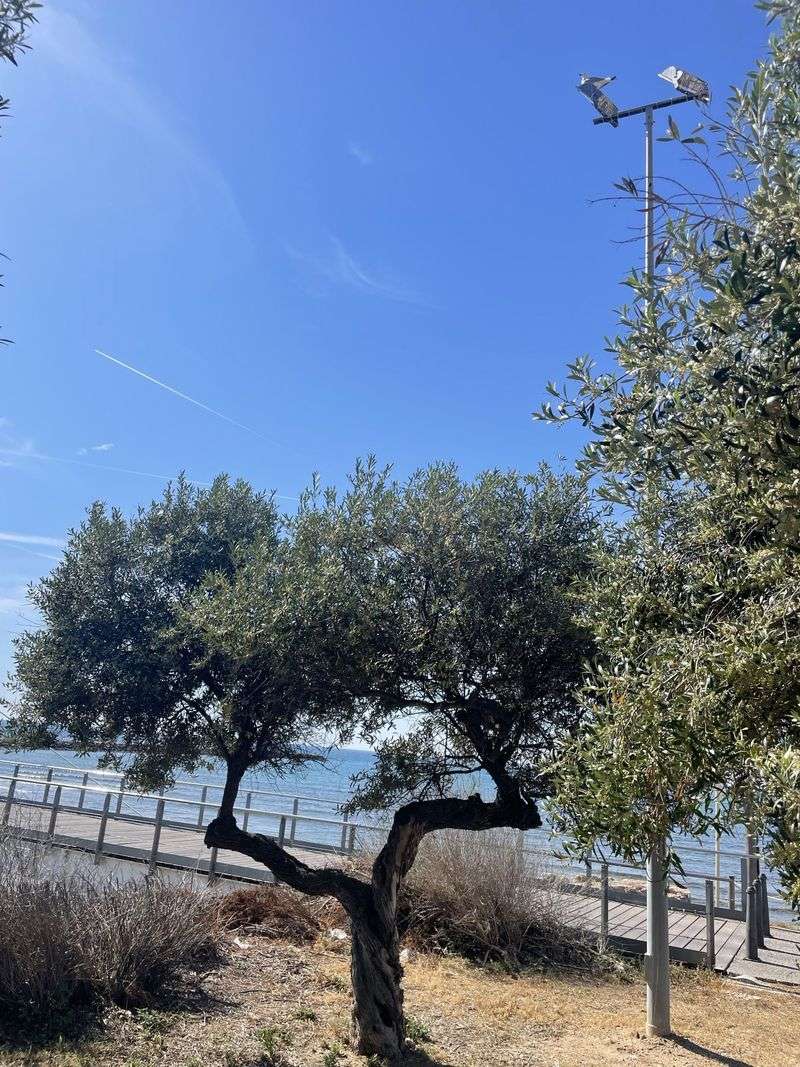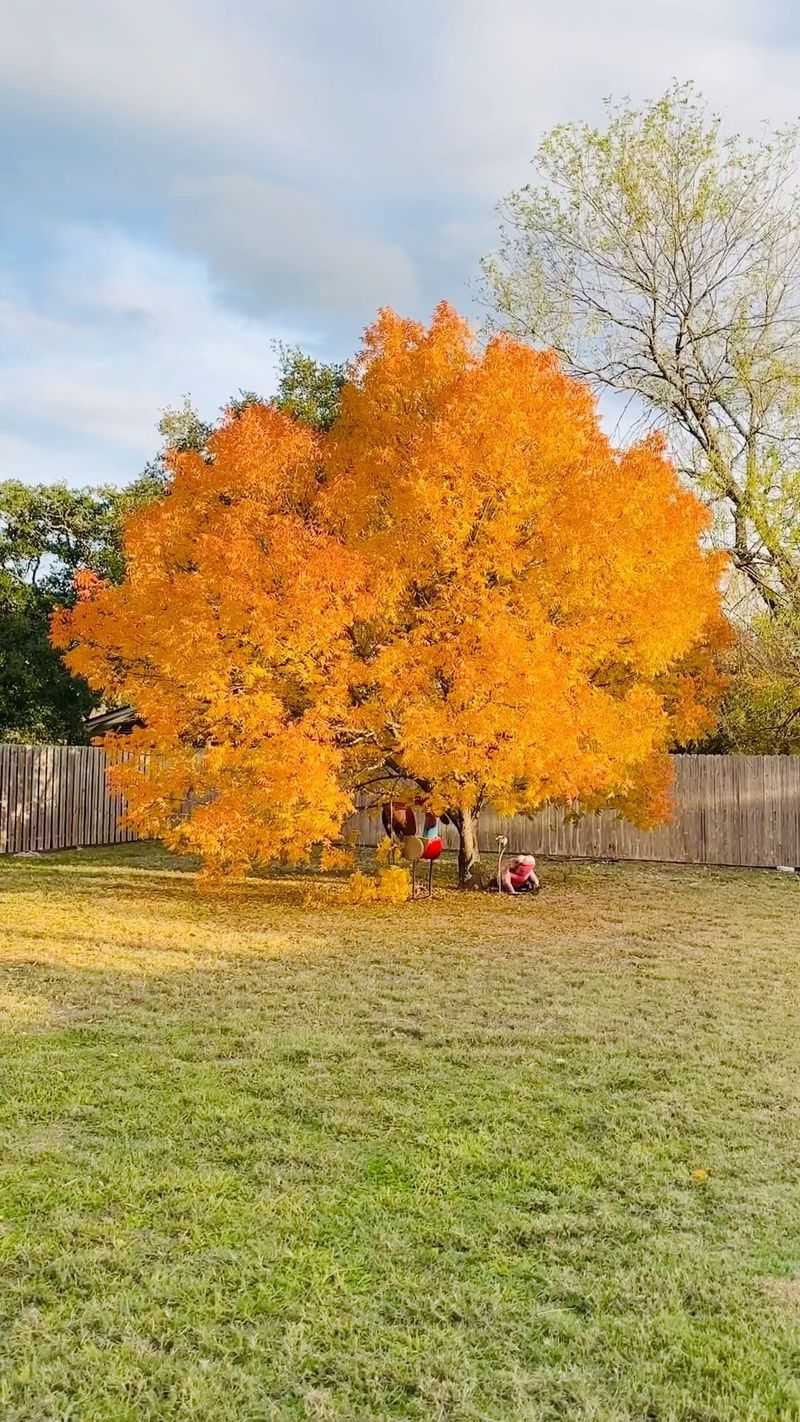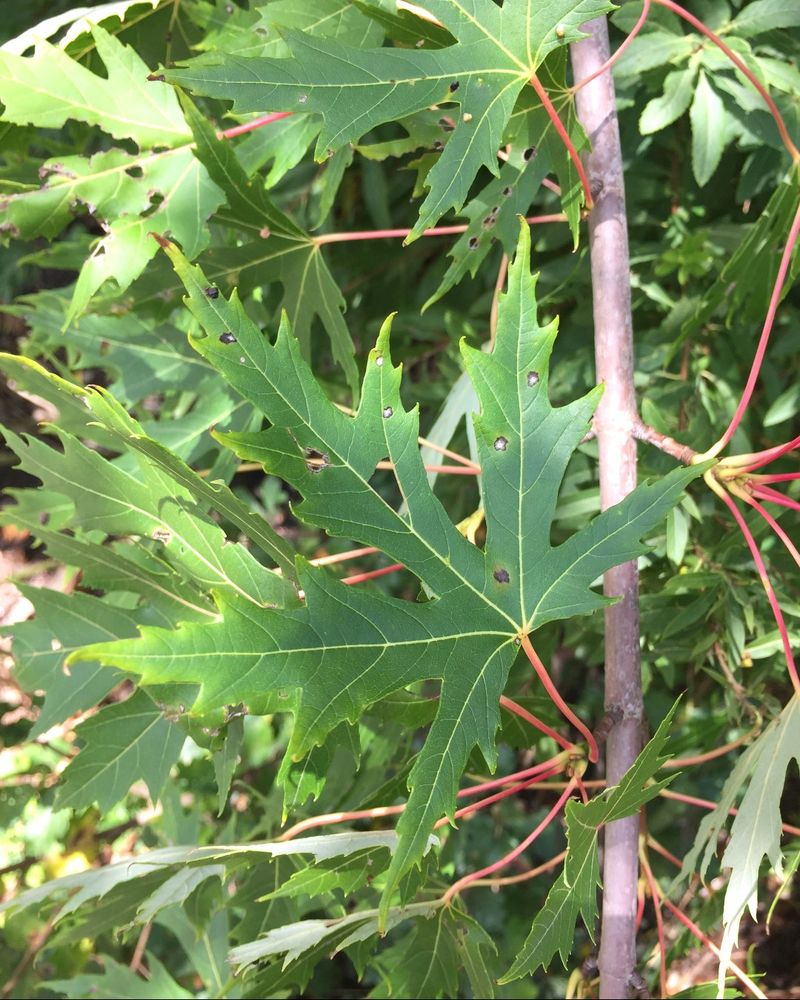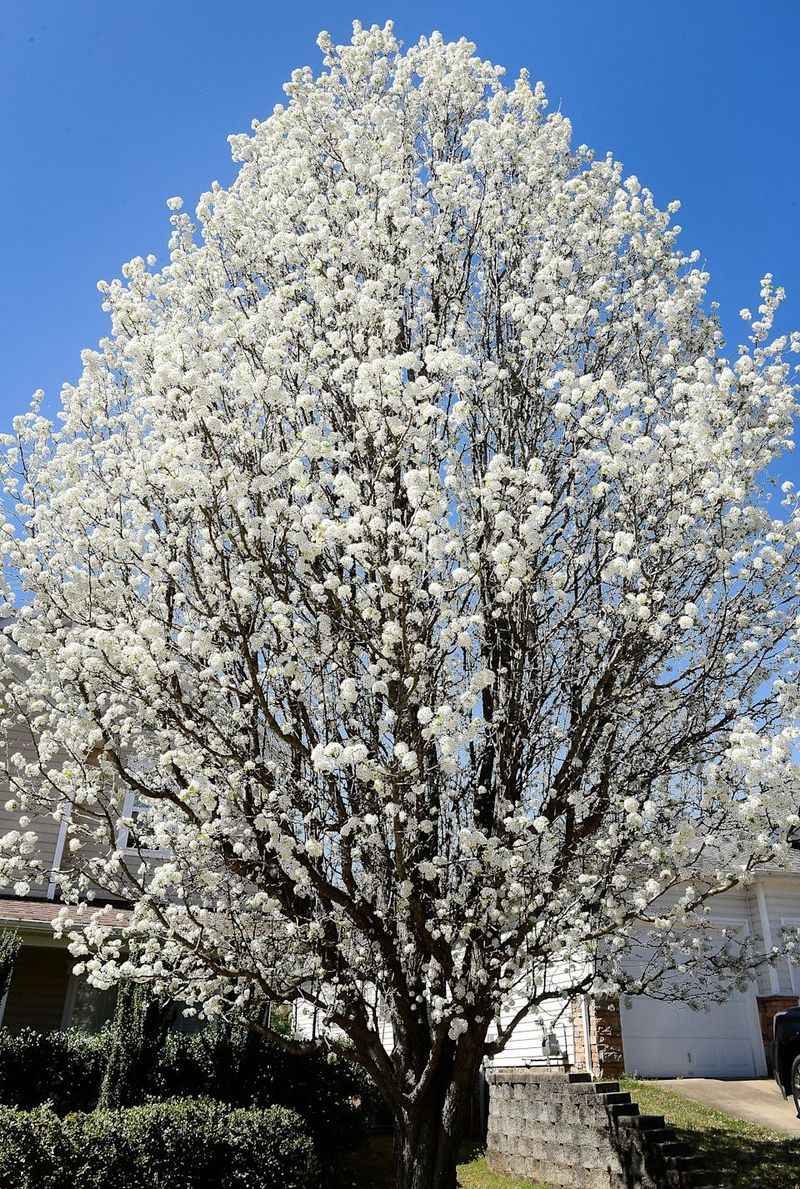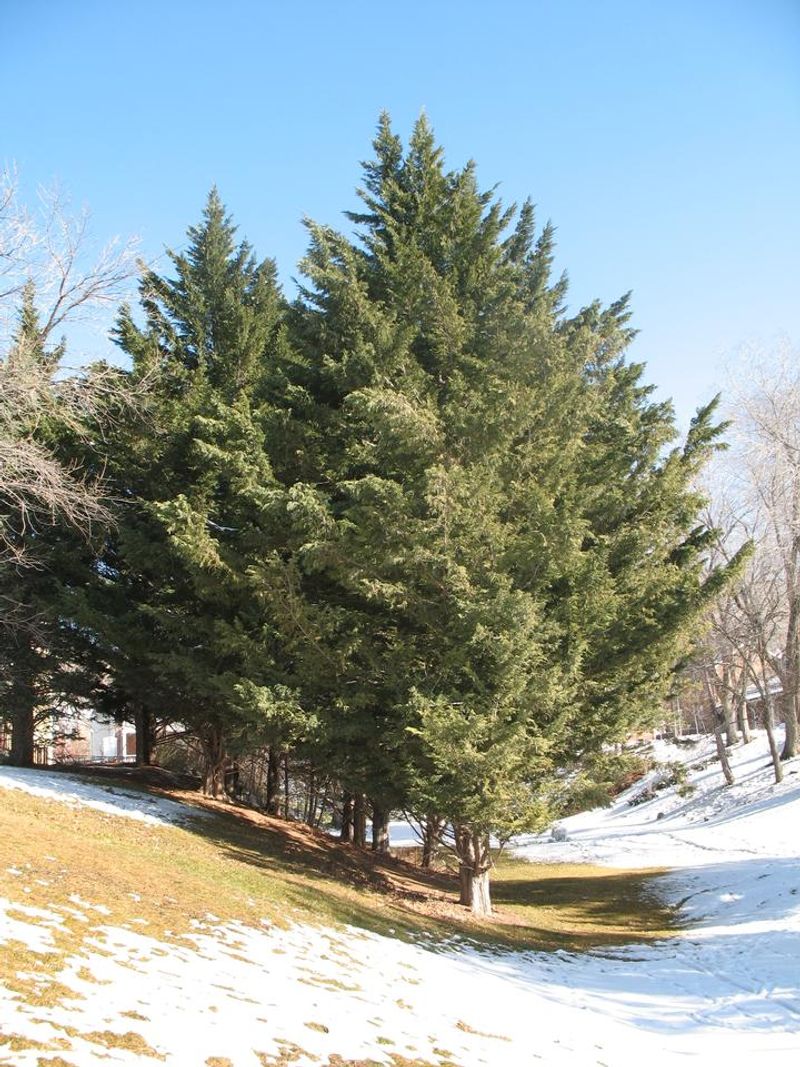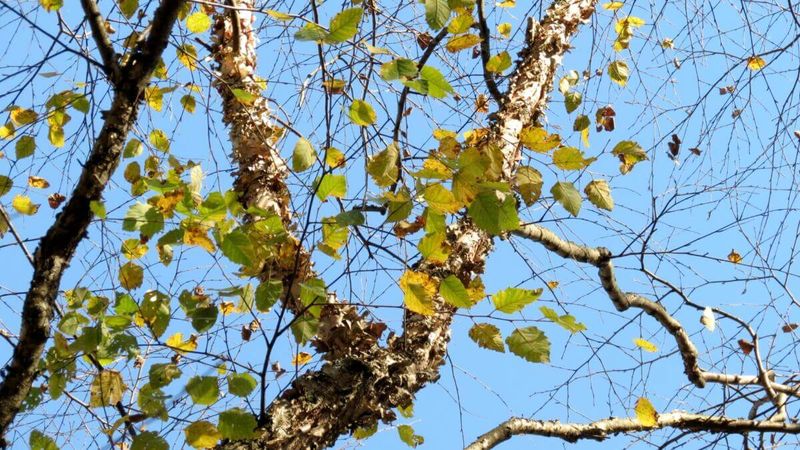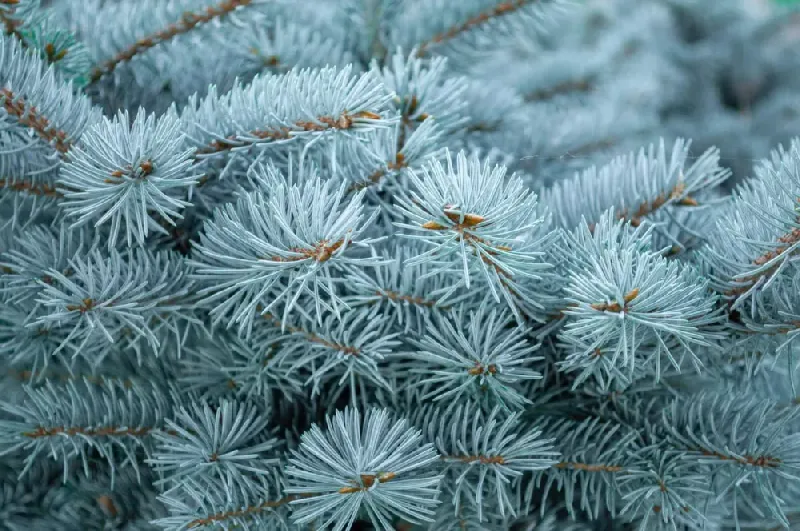Living by the coast offers stunning views and fresh sea air, but planting trees in these areas presents unique challenges. Harsh salt spray, constant winds, and sandy soils can quickly damage or kill trees that aren’t suited for coastal conditions. Choosing the right trees for your oceanfront property means understanding which varieties naturally withstand these tough conditions and which ones simply won’t survive.
1. Eastern Red Cedar
Native to North America, Eastern Red Cedar stands as a coastal champion with remarkable salt tolerance. Its dense, pyramid-shaped structure naturally deflects punishing winds without breaking.
Mature trees reach 40-50 feet tall while developing a distinctive reddish-brown, shredding bark that adds winter interest. Their blue-green foliage transforms to a bronzy hue during colder months, providing year-round appeal.
Beyond their ornamental value, these evergreens create excellent windbreaks and privacy screens. Birds adore their bluish berries, making this cedar an ecological win for coastal landscapes where wildlife habitat is often limited.
2. Live Oak
Majestic and enduring, Live Oaks have evolved specifically to handle coastal conditions. Their sprawling, horizontal growth pattern developed as nature’s answer to hurricane-force winds.
The wood possesses incredible density and strength – qualities that once made these trees prized for shipbuilding. Their massive canopies create cooling shade while their extensive root systems help prevent erosion in sandy coastal soils.
Unlike many oaks, Live Oaks maintain their leathery, oval leaves year-round, shedding them gradually rather than seasonally. This evergreen quality provides continuous shade and habitat, making them living landmarks that can survive for centuries along southern coastlines.
3. Bayberry
Perfect for smaller coastal spaces, Bayberry rarely exceeds 15 feet tall. Its aromatic, waxy berries once provided colonists with candle-making material and now attract diverse bird species to coastal gardens.
Gray-green leaves with a leathery texture help this shrubby tree conserve moisture while deflecting salt spray. The foliage releases a pleasant fragrance when crushed, adding a sensory element to seaside landscapes.
As a nitrogen-fixer, Bayberry improves surrounding soil quality – a significant benefit in nutrient-poor coastal areas. Female plants produce the signature berries, so planting both male and female specimens ensures you’ll get the full ornamental and wildlife benefits.
4. Japanese Black Pine
Sculptural and striking, Japanese Black Pine creates living coastal artwork with its irregular branching pattern and distinctive silhouette. Sailors historically used these pines as navigational landmarks due to their visibility against coastal horizons.
Long needles bundled in pairs and rugged, plated bark give this pine unmistakable character. The tree naturally develops a wind-swept appearance even when grown in protected areas, making it perfect for Japanese-inspired coastal gardens.
Remarkably drought-tolerant once established, these pines thrive in sandy, well-drained soils where other trees struggle.
5. Monterey Cypress
Recognizable from countless California coastal paintings, Monterey Cypress trees develop flat-topped crowns shaped by persistent ocean winds. Their twisted trunks and contorted branches create living sculptures along dramatic shorelines.
Naturally rare in the wild, these trees have been widely planted for their exceptional coastal performance. The soft, feathery foliage appears almost cloud-like from a distance while providing dense shade and wildlife habitat.
Monterey Cypress can grow surprisingly quickly, reaching 40 feet in just 20 years under favorable conditions. Their distinctive silhouettes become more dramatic with age, developing character that can’t be replicated by faster-growing but shorter-lived species.
6. Cabbage Palm
Florida’s state tree brings tropical flair to coastal landscapes with remarkable salt tolerance. Fan-shaped fronds crown a telephone-pole-straight trunk that can bend dramatically during storms without breaking – a perfect adaptation for hurricane zones.
Unlike true palms that die when their growing tip is damaged, Cabbage Palms can often recover from severe cold damage. Their massive root balls anchor them securely in shifting coastal soils, preventing toppling even in severe weather.
Historically, native peoples used nearly every part of this versatile palm – from the edible terminal bud (though harvesting this kills the tree) to the leaves for thatching. Today, they provide nesting platforms for birds and year-round greenery in coastal settings.
7. Australian Tea Tree
Drought-tough and salt-spray resilient, Australian Tea Trees bring delicate beauty to harsh coastal conditions. Their fine-textured foliage appears almost cloud-like, creating a soft contrast to more rigid coastal plants.
Small but profuse white or pink flowers blanket these trees in spring, attracting pollinators to coastal gardens. The peeling, mottled bark adds year-round interest, revealing smooth patches in cinnamon, cream, and gray tones.
Despite their delicate appearance, these trees demonstrate remarkable toughness. Originally from Australia’s wind-battered coastlines, they’ve adapted to thrive where many other ornamentals fail. Their essential oils give the foliage a pleasant fragrance while helping the plant resist insect damage and fungal problems.
8. Pitch Pine
Hardy survivor of the harshest Atlantic coastal conditions, Pitch Pine thrives where more delicate conifers perish. Its gnarled, irregular form tells the story of countless storms weathered along northeastern shores.
Remarkably fire-adapted, these pines can resprout from their trunks after blazes – an unusual ability among conifers. Their thick, plated bark protects against both salt spray and periodic wildfires that naturally occur in coastal pine barrens.
Wildlife depends heavily on Pitch Pines, with their seeds feeding numerous bird species and their structure providing nesting habitat. The resinous wood resists decay even in wet coastal conditions, making these trees long-lived sentinels of the shoreline.
9. Salt Bush
More shrub than tree, Salt Bush earns its place on this list through unmatched salt tolerance and coastal adaptability. Silver-gray foliage reflects sunlight, reducing water loss in windy shoreline conditions.
Growing quickly to create living screens, Salt Bush can be pruned into small tree form or maintained as a dense hedge. The tiny scales covering the leaves actually excrete excess salt – a remarkable adaptation that allows this plant to thrive where others quickly brown and die.
Birds and small mammals find essential shelter within its dense branches, making Salt Bush valuable for coastal wildlife habitat. The plant’s deep roots help stabilize dunes and prevent erosion, providing ecological services beyond its ornamental value.
10. Buttonwood
Mangrove relative Buttonwood brings tropical hardiness to coastal landscapes with exceptional salt tolerance. Its distinctive greenish-gray bark peels in thin sheets, revealing a smooth, multicolored surface beneath that adds visual interest.
The button-like fruits give this tree its common name and provide food for coastal birds. Leathery, oval leaves with a silvery undersides flash dramatically in coastal breezes, creating a living light show.
Often found growing alongside true mangroves, Buttonwood helps prevent shoreline erosion while withstanding periodic flooding with saltwater. The wood’s natural resistance to decay made it historically valuable for underwater structures and boat building in tropical coastal communities.
11. Wax Myrtle
Semi-evergreen Wax Myrtle brings four-season interest to coastal landscapes with aromatic foliage that naturally repels insects. Crushing the leaves releases a pleasant bayberry scent that has made this native plant a longtime favorite in coastal gardens.
Clusters of waxy, blue-gray berries appear on female plants, providing critical winter food for migrating birds. The dense branching structure creates excellent nesting habitat and windbreaks in exposed coastal areas.
Early colonists discovered that boiling the berries produced a clean-burning, pleasantly scented wax for candle-making. Today, Wax Myrtle’s primary value comes from its landscape versatility – it can be grown as a small tree, privacy screen, or naturalized in coastal woodland edges.
12. Holly
Evergreen Holly varieties bring year-round structure and winter color to coastal landscapes. Their leathery, waxy leaves evolved specifically to minimize moisture loss in windy, salt-exposed conditions.
Female trees produce the iconic red berries that persist through winter, feeding birds when other food sources disappear. The dense branching pattern creates excellent nesting habitat while the prickly leaves offer protection from predators.
While many people associate hollies with Christmas decorations, these trees have long coastal histories. Native Americans used the wood for tools while early settlers discovered medicinal uses for the bark. Modern coastal gardeners value holly’s combination of beauty, wildlife benefits, and remarkable resilience.
13. Olive Tree
Mediterranean natives, Olive trees have evolved over millennia to handle coastal conditions with grace. Their silvery-green leaves reflect intense sunlight while minimizing water loss in windy conditions.
Gnarly trunks develop character with age, becoming living sculptures that anchor coastal gardens. The trees’ deep root systems seek out groundwater while stabilizing slopes and preventing erosion in coastal areas.
Beyond their ornamental value, productive varieties offer homegrown olives for curing or pressing into oil. Archaeological evidence shows coastal olive cultivation dating back thousands of years – a testament to these trees’ perfect adaptation to shoreline conditions where few other fruit trees can survive.
14. Chinese Pistache
Spectacular fall color meets coastal resilience in Chinese Pistache trees. Unlike many coastal-tolerant species that remain evergreen, these deciduous trees deliver brilliant autumn displays in fiery orange and crimson.
Umbrella-shaped canopies provide excellent shade while the tree’s naturally strong branch structure resists breakage in coastal winds. Compound leaves with multiple leaflets create dappled shade perfect for understory plants that might struggle in coastal conditions.
Female trees produce small, inedible red berries that attract birds throughout winter. The species’ remarkable drought tolerance once established makes it perfect for coastal areas where irrigation water may be limited or have high salt content.
15. Silver Maple – Never Plant
Despite fast growth that tempts coastal homeowners, Silver Maples spell disaster in oceanfront landscapes. Their shallow, aggressive roots notoriously damage foundations, sidewalks, and sewer lines – problems magnified in sandy coastal soils where roots spread even more aggressively seeking stability.
Weak wood breaks easily in coastal winds, creating dangerous falling limbs during storms. The trees’ thirsty nature means they constantly compete with nearby plants for limited moisture in already challenging coastal conditions.
Silver Maples evolved for riverside environments, not salt-exposed coastlines. Their thin bark easily suffers salt damage, leading to entry points for pests and diseases. Better alternatives include more coastal-adapted maples like Japanese maple (in protected spots) or natives like Red Maple.
16. Bradford Pear Isn’t A Good Choice
Once popular for fast growth and spring flowers, Bradford Pears fail catastrophically in coastal settings. Their infamously weak branch structure splits apart under even moderate coastal winds, often destroying the entire tree during its prime.
Salt spray quickly damages their thin-skinned leaves, causing premature browning and leaf drop. The trees’ dense canopy acts like a sail in coastal winds, increasing the likelihood of toppling completely.
Beyond their physical weaknesses, Bradford Pears have become invasive in many regions, escaping cultivation and crowding out native species. Their thorny offspring create impenetrable thickets that reduce biodiversity in coastal ecosystems already under threat from development and climate change.
17. Leyland Cypress Doesn’t Deliver
Frequently sold as fast-growing privacy screens, Leyland Cypress trees become coastal nightmares within years. Their extremely dense foliage acts like a sail, catching wind and often resulting in complete uprooting during coastal storms.
Shallow root systems fail to anchor adequately in sandy soils, while their thirsty nature makes them perpetually stressed in coastal conditions. This stress makes them highly susceptible to bagworms and deadly canker diseases that spread quickly through coastal plantings.
When salt spray inevitably damages portions of these trees, they rarely recover their uniform appearance, instead developing unsightly dead patches. For coastal privacy, consider native alternatives like Eastern Red Cedar or Wax Myrtle that naturally withstand shoreline conditions.
18. White Birch Won’t Thrive In These Conditions
Delicate beauty makes White Birch trees tempting for coastal landscapes, but their paper-thin bark offers no protection against salt spray. The iconic white bark quickly develops unsightly brown lesions when exposed to coastal conditions.
Notorious for shallow roots, these trees topple easily in sandy coastal soils, especially during storms with saturated ground. Their preference for cool, moist conditions makes them perpetually stressed in hot, windy coastal environments.
This stress attracts devastating bronze birch borers that typically kill coastal-planted birches within years. For similar aesthetic appeal with coastal toughness, consider alternatives like River Birch in protected locations or Bayberry for more exposed sites.
19. Avoid Colorado Blue Spruce
Mountain-native Blue Spruce trees quickly deteriorate in coastal conditions despite their initial beauty. Their needles retain salt spray, which burns the foliage and causes progressive dieback from the bottom upward.
Evolved for cold, dry mountain climates, these spruces suffer in coastal humidity that promotes needle fungus and root diseases. Their rigid branching structure catches wind rather than flexing with it, leading to broken limbs or complete failure during coastal storms.
Unlike coastal-adapted conifers that naturally shed salt buildup, Blue Spruce needles hold onto damaging salts until they eventually brown and drop. For blue-toned coastal conifers, consider salt-tolerant alternatives like Blue Point Juniper or Blue Ice Cypress that naturally withstand shoreline conditions.

